Rotator Cuff Tendonitis
Updated:
(Also known as Rotator Cuff Tendinitis, Rotator Cuff Tendinopathy, Rotator Cuff Tendonitis, Supraspinatus Tendonitis, Supraspinatus Tendinitis, Supraspinatus Tendinopathy)
N.B. Although recent research suggests that ‘rotator cuff tendinopathy’ is a more appropriate term to describe overuse injuries to the rotator cuff tendons, we will use the term ‘rotator cuff tendonitis’ in this document as it is more widely known.
What is rotator cuff tendonitis?
Rotator cuff tendonitis is a condition characterised by damage, degeneration and disorganisation of one or more of the rotator cuff tendons (figure 1).
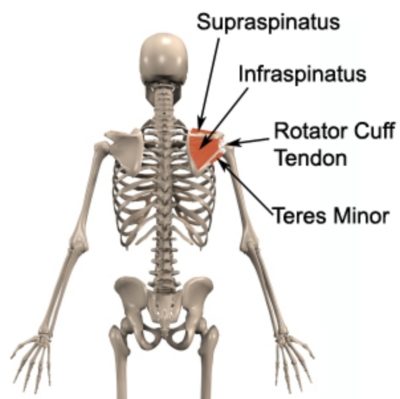
The rotator cuff is a group of muscles which originate from the shoulder blade and attach to the upper arm bone (humerus) via the rotator cuff tendons (figure 1). Collectively, the rotator cuff act to provide stability to the shoulder joint and assist with elevation and rotation movements of the shoulder. The 4 muscles of the rotator cuff include:
- Supraspinatus
- Infraspinatus
- Subscapularis
- Teres Minor
During contraction of the rotator cuff muscles, tension is placed through the rotator cuff muscles and tendons. When this tension is excessive due to too much repetition or high force, damage to the rotator cuff tendons may occur.
Rotator cuff tendonitis is a condition whereby there is damage, with subsequent inflammation and degeneration to one or more of the rotator cuff tendons. This is usually due to gradual wear and tear associated with overuse, however, it may also occur traumatically due to a specific incident. The rotator cuff muscle that is most commonly affected in rotator cuff tendonitis is the supraspinatus.
Although this condition can occur at any age, it is commonly seen in patients between the ages of 40 and 60. Rotator cuff tendonitis is commonly seen in association with subacromial impingement or bursitis.
Causes of rotator cuff tendonitis
Rotator cuff tendonitis most commonly occurs due to repetitive or prolonged activities placing strain on the rotator cuff. This typically occurs due to excessive lifting, overhead activities, lying on the affected side, pushing, pulling or use of the arm in front of the body (e.g. housework).
Occasionally, rotator cuff tendonitis may occur suddenly due to a high force going through the rotator cuff tendons beyond what they can withstand. This may be due to heavy or awkward lifting, a fall onto an outstretched hand, heavy pushing or pulling, or a forceful throw. Rotator cuff tendonitis may also occur following a rotator cuff tear.
In athletes, rotator cuff tendonitis is commonly seen in throwing sports (such as cricket or baseball), swimming (particularly freestyle and butterfly), racquet sports (such as tennis), weight lifting or paddling sports (such as kayaking).
Signs and symptoms of rotator cuff tendonitis
The symptoms of rotator cuff tendonitis usually develop gradually over a period of time. Often, the pain associated with this condition is experienced as an ache in the shoulder that increases to a sharper pain or catching pain with certain activities. Occasionally, pain may also be experienced in the upper arm, shoulder blade, upper back or neck.
In patients with minor rotator cuff tendonitis, little or no symptoms may be present. Some patients may experience pain on commencing activity that reduces as they warm up. These patients are usually able to continue sport or activity only to have an increase in pain, ache or stiffness upon resting later (particularly that night or the following morning). In severe or chronic cases the pain may be disabling, preventing the patient from performing further activity. Muscle wasting, weakness and night pain (regardless of position) may also be present.
Patients with rotator cuff tendonitis will usually experience pain or difficulty when lifting heavy objects (especially overhead). Pain may also increase when performing overhead activities, elevating the affected arm, using the arm in front of the body, during heavy pushing or pulling or when lying on the affected side. Tenderness on firmly pressing the tip of the shoulder (rotator cuff tendons – figure 1) may also be present.
Rotator cuff tendonitis may also be seen in combination with shoulder instability (particularly in the younger athlete). In these instances, patients may experience ‘clicking’ or ‘clunking’, an occasional sensation of the shoulder feeling ‘out of place’, pins and needles, numbness or a ‘dead arm’.
Diagnosis of rotator cuff tendonitis
A thorough subjective examination combined with objective tests from a physiotherapist is usually sufficient to diagnose rotator cuff tendonitis. An investigative ultrasound and X-ray are most commonly used to confirm diagnosis and assess the severity of the condition. In some cases, an MRI may also be performed to rule out other pathologies and assist with diagnosis.
Treatment for rotator cuff tendonitis

Members Only ContentBecome a PhysioAdvisor Member to gain full access to this exclusive content. For more details see Become a Member. Already a member? Login Now
Prognosis of rotator cuff tendonitis
With appropriate management and physiotherapy, most minor cases of rotator cuff tendonitis, that have not been present for long, can usually recover within a few weeks. In chronic cases, recovery can be a lengthy process and may take 3-6 months or longer to achieve an optimal outcome.
Contributing factors to the development of rotator cuff tendonitis
There are several factors which can predispose patients to developing rotator cuff tendonitis. These need to be assessed and corrected with direction from a physiotherapist. Some of these factors include:
- shoulder instability
- muscle weakness (especially the scapular stabilizers and rotator cuff muscles)
- muscle tightness
- joint stiffness (shoulder, AC joint, neck or upper back)
- muscle imbalances
- poor posture
- excessive or inappropriate training or activity
- inadequate recovery periods from sport or activity
- abnormal biomechanics (eg. poor throwing technique or stroke technique with swimming)
- inadequate warm-up
- past history of shoulder injury
- certain bone anatomy, or degenerative bony spurring, on the acromion
- being overweight
Physiotherapy for rotator cuff tendonitis
Physiotherapy treatment for rotator cuff tendonitis is vital to hasten the healing process, ensure an optimal outcome and reduce the likelihood of injury recurrence. Treatment may comprise:
- soft tissue massage
- electrotherapy (e.g. ultrasound)
- joint mobilization (shoulder, AC joint, neck and upper back)
- dry needling
- ice or heat treatment
- the use of a sling
- progressive exercises to improve flexibility and strength (particularly the scapular stabilizers and rotator cuff muscles)
- education
- training and activity modification advice
- technique correction
- postural correction
- anti-inflammatory advice
- devising and monitoring a return to sport or activity plan
Other intervention for rotator cuff tendonitis
Despite appropriate physiotherapy management, some patients with rotator cuff tendonitis do not improve. When this occurs the treating physiotherapist or doctor can advise on the best course of management. This may include further investigations (such as X-rays, ultrasound, CT scan or MRI), pharmaceutical intervention, corticosteroid injection (sometimes required in the case of secondary subacromial bursitis) or referral to appropriate medical authorities who can advise on any intervention that may be appropriate to improve the condition.
Exercises for rotator cuff tendonitis
The following physiotherapy exercises are often prescribed to patients with rotator cuff tendonitis. The suitability of these exercises should be discussed with your treating physiotherapist prior to commencement. Generally, they should be repeated 2 – 3 times daily and only provided they do not cause or increase symptoms.
Your physiotherapist can advise when it is appropriate to begin the initial exercises and eventually progress to the intermediate, advanced and other exercises. As a general rule of thumb, the addition of exercises or progression to more advanced exercises should take place provided there is no increase in symptoms.
Initial Exercises
Shoulder Blade Squeezes
Begin this exercise standing or sitting with your back straight. Your neck should be straight, your chin should be tucked in slightly and your shoulders should be back slightly. Slowly squeeze your shoulder blades together as hard and far as possible provided it does not cause or increase symptoms (figure 2). Hold for 5 seconds and repeat 10 times.

Pendular Exercises
Begin leaning forwards with your uninjured forearm supported on a table or bench. Keeping your back straight and your shoulder relaxed, gently swing your injured arm forwards and backwards as far as you can go without pain and provided you feel either nothing, or, no more than a mild to moderate stretch (figure 3). Repeat 10 times provided the exercise does not cause or increase symptoms. Repeat the exercise swinging your arm side to side provided it is pain free.
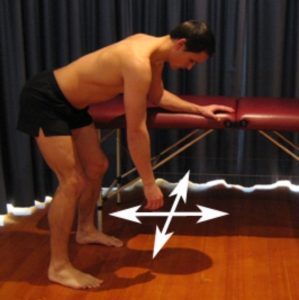
Pendular Circles
Begin leaning forwards with your uninjured forearm supported on a table or bench. Keeping your back straight and your shoulder relaxed, gently swing your arm in circles clockwise as far as you can go without pain and provided you feel either nothing, or, no more than a mild to moderate stretch (figure 4). Repeat the exercise swinging your arm counter clockwise. Repeat 10 times in each direction provided the exercise does not cause or increase symptoms.
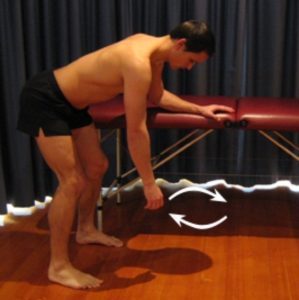
More Initial Exercises

Members Only ContentBecome a PhysioAdvisor Member to gain full access to this exclusive content. For more details see Become a Member. Already a member? Login Now
Intermediate Exercises

Members Only ContentBecome a PhysioAdvisor Member to gain full access to this exclusive content. For more details see Become a Member. Already a member? Login Now
Advanced Exercises

Members Only ContentBecome a PhysioAdvisor Member to gain full access to this exclusive content. For more details see Become a Member. Already a member? Login Now
Other Exercises

Members Only ContentBecome a PhysioAdvisor Member to gain full access to this exclusive content. For more details see Become a Member. Already a member? Login Now
Rehabilitation Protocol for rotator cuff tendonitis

Members Only ContentBecome a PhysioAdvisor Member to gain full access to this exclusive content. For more details see Become a Member. Already a member? Login Now
 Physiotherapy products for rotator cuff tendonitis
Physiotherapy products for rotator cuff tendonitis
Below is a list of commonly recommended physiotherapy products to accelerate recovery in patients with this condition:
-
 Wheat Bags
Wheat Bags -
 AllCare Band
AllCare Band -
 Oppo Humerus Brace (OPP4072)
Oppo Humerus Brace (OPP4072) -
 Premium Strapping Tape 38mm (Victor)
Premium Strapping Tape 38mm (Victor) -
 AllCare Pro-TENS Machine
AllCare Pro-TENS Machine -
 AllCare Tubing
AllCare Tubing -
 AllCare Spikey Massage Ball
AllCare Spikey Massage Ball -
 AllCare Instant Cold Pack (15 x 25cm)
AllCare Instant Cold Pack (15 x 25cm) -
 AllCare Foam Roller Round
AllCare Foam Roller Round -
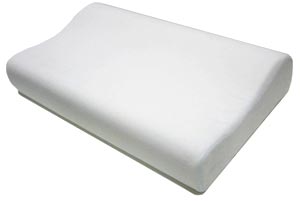 Dentons Impressions Classic Memory Foam Therapeutic Pillow
Dentons Impressions Classic Memory Foam Therapeutic Pillow -
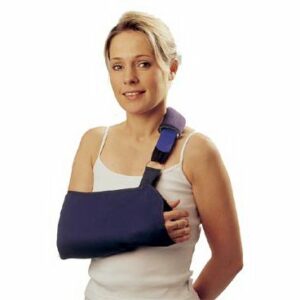 Actimove Arm Sling (Mitella)
Actimove Arm Sling (Mitella)
To purchase physiotherapist recommended products for rotator cuff tendonitis, click on one of the above links or visit the PhysioAdvisor Shop.
 Find a Physio for rotator cuff tendonitis
Find a Physio for rotator cuff tendonitis
Find a local physiotherapist in your area who can assess and treat rotator cuff tendonitis
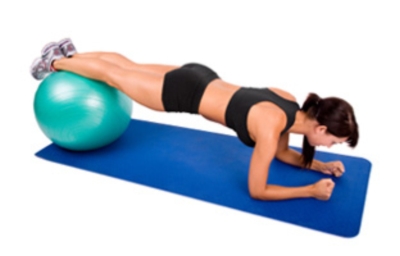 Other Exercises
Other Exercises
- Shoulder Strengthening Exercises.
- Shoulder Stretches.
- Upper Body Massage Ball Exercises.
- Upper Body Foam Roller Exercises.
 More Information
More Information
- Shoulder Taping.
- Postural Taping.
- Posture.
- Ice or Heat.
- R.I.C.E. Regime.
- Why is my injury not improving?
- Shoulder Diagnosis Guide.
Become a PhysioAdvisor Member

Link to this Page
If you would like to link to this article on your website, simply copy the code below and add it to your page:
<a href="https://physioadvisor.com.au/injuries/shoulder/rotator-cuff-tendonitis”>Rotator Cuff Tendonitis – PhysioAdvisor.com</a><br/>Rotator cuff tendonitis (Rotator cuff tendinopathy) is a condition characterised by damage and degeneration of one or more of the rotator cuff tendons.
Return to the top of Rotator Cuff Tendonitis.

